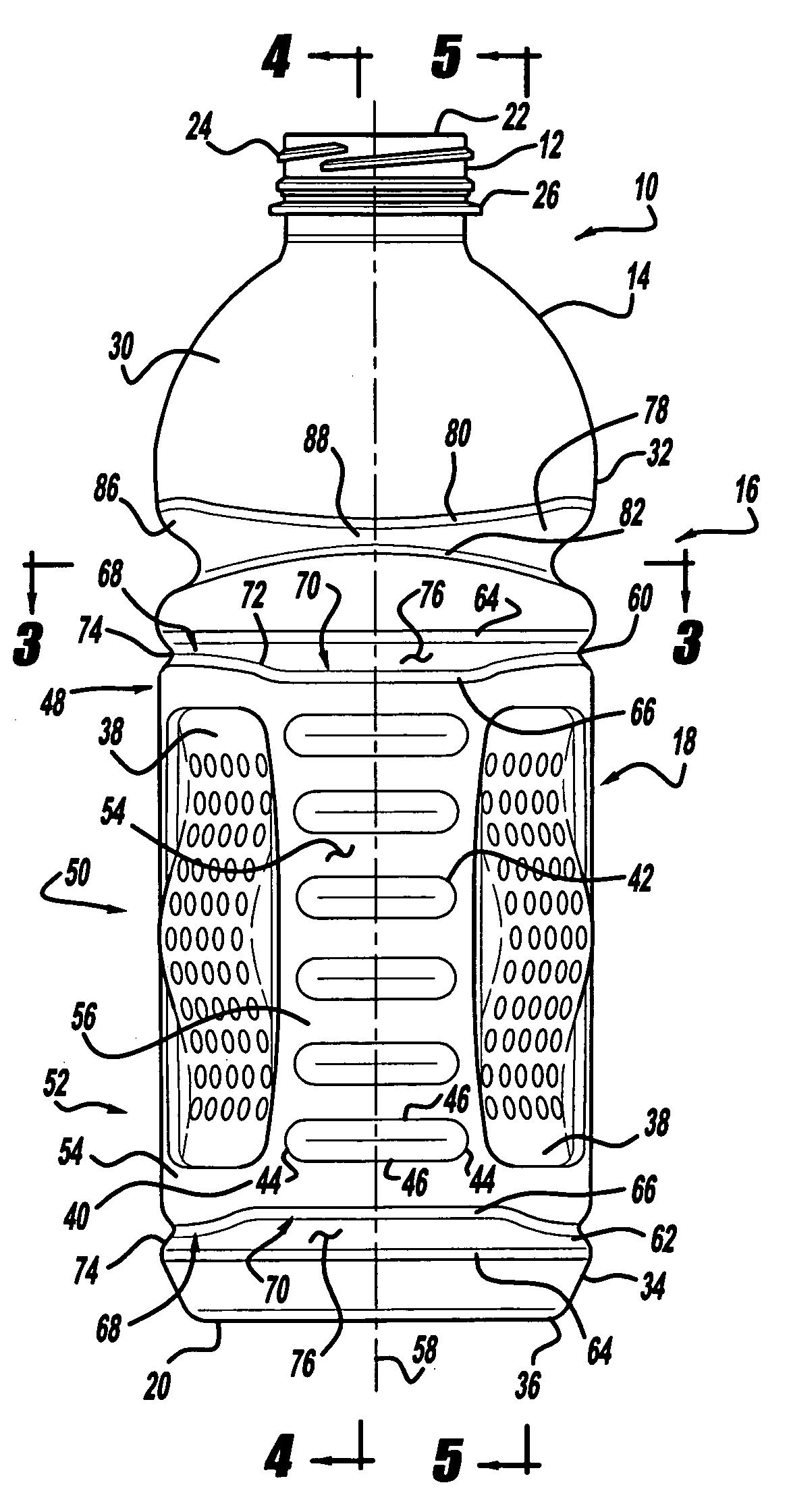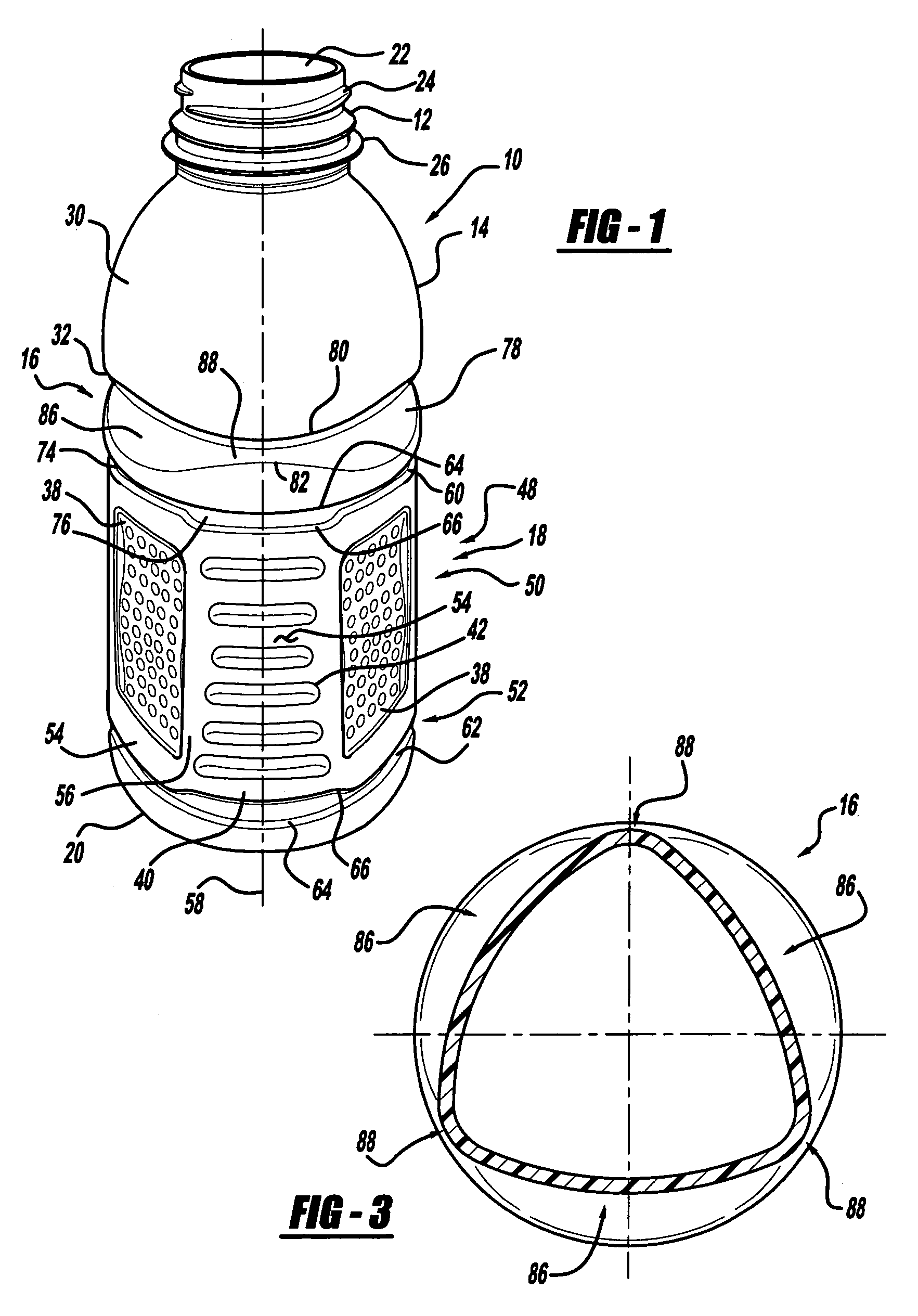Lightweight container
a container and light weight technology, applied in the field of plastic containers, can solve the problems of increasing the cost of the product, increasing the risk of container failure during storage or handling, and becoming prohibitive in cost, and achieve the effect of reducing the volume of the container and enhancing the top load strength
- Summary
- Abstract
- Description
- Claims
- Application Information
AI Technical Summary
Benefits of technology
Problems solved by technology
Method used
Image
Examples
Embodiment Construction
[0035]The following description of the preferred embodiment is merely exemplary in nature, and is in no way intended to limit the invention or its application or uses.
[0036]As discussed above, to accommodate vacuum forces during cooling of the contents within a hot fill or heat set container, containers have been provided with a series of vacuum panels around their sidewalls. Traditionally, these vacuum panels have been semi-rigid and incapable of preventing unwanted distortion elsewhere in the container, particularly in lightweight containers. Such containers have also exhibited a somewhat limited ability to withstand top loading during filling, capping, labeling and stacking for transportation or storage operations. Little or no consideration has been given to the upper portion of the container, including the waist region of the container in an attempt to resolve these concerns.
[0037]Referring now to the drawings, there is depicted a hot fillable, blow molded plastic container 10 ...
PUM
 Login to View More
Login to View More Abstract
Description
Claims
Application Information
 Login to View More
Login to View More - R&D
- Intellectual Property
- Life Sciences
- Materials
- Tech Scout
- Unparalleled Data Quality
- Higher Quality Content
- 60% Fewer Hallucinations
Browse by: Latest US Patents, China's latest patents, Technical Efficacy Thesaurus, Application Domain, Technology Topic, Popular Technical Reports.
© 2025 PatSnap. All rights reserved.Legal|Privacy policy|Modern Slavery Act Transparency Statement|Sitemap|About US| Contact US: help@patsnap.com



